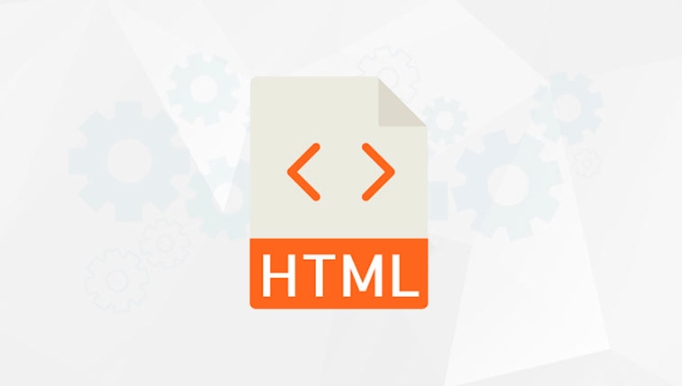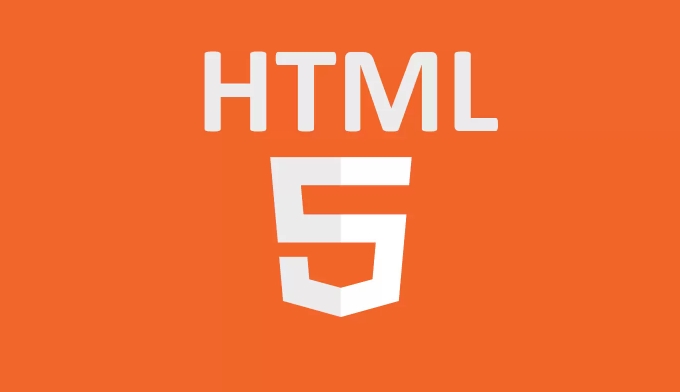Reducing redundant code, reasonably organizing resource references, and utilizing browser caching mechanism are the core means to optimize HTML loading speed. 1. Delete meaningless comments and blank lines, avoid excessive nesting, use semantic tags and compress file volume with the help of tools; 2. Place CSS on top of
, place JS in front of or load asynchronously with async/defer, merge resources to reduce the number of requests; 3. Implement browser cache by setting the Cache-Control header, and set a reasonable cache time according to the content update frequency; 4. Use a delay loading strategy for non-first-screen picture and videos to reduce the initial load. These methods can effectively improve page loading efficiency, enhance user experience and improve search engine rankings.
Page loading speed is crucial to both user experience and search engine rankings, and HTML, as the infrastructure of web pages, optimized can effectively improve loading efficiency. To put it directly, the key points: reducing redundant code, rationally organizing resource references, and utilizing browser caching mechanism are the core means to optimize HTML loading speed.

1. Reduce unnecessary HTML code
Too many nested tags, duplicate class names, or useless comments will increase the file size and slow down the parsing speed. For example, some developers habitually use multiple <div> wrapping elements, which can actually achieve the same layout by simplifying the structure.<ul>
<li> Remove meaningless comments and blank lines</li>
<li> Avoid over-necking and flattening the structure as much as possible</li>
<li> Using semantic tags (such as <code><main></main> , <section></section> ) instead of common <div> can help reduce class name dependencies<p> After cleaning up HTML, you can use tools such as <a href="http://ipnx.cn/link/409ebc36b2594e602977091b76c85d42">HTML Miniifier</a> to compress it to automatically remove unnecessary spaces and line breaks. </p>
<img src="/static/imghw/default1.png" data-src="https://img.php.cn/upload/article/000/000/000/175278100575800.jpeg" class="lazy" alt="Optimizing HTML for Faster Page Loads"><h3 id="Correctly-introduce-CSS-and-JS-resources"> 2. Correctly introduce CSS and JS resources</h3>
<p> The order and method of resource loading directly affect rendering performance. A common problem is putting a lot of JS in <code> , causing the page to "stuck" until the script is loaded.
Suggested practices:

- CSS is placed on top of
to ensure styles are loaded first - JS should be placed before
as much as possible, or load asynchronously usingasyncordeferattributes - Merge multiple CSS/JS files to reduce the number of HTTP requests
For example, writing script references like this can avoid blocking rendering:
<script src="main.js" defer></script>
3. Utilize browser caching policies
If the user has visited your website, there is no need to re-download all HTML files when entering again. Setting up a suitable cache policy allows the browser to reuse existing resources.
You can set Cache-Control header in the server configuration, for example:
Cache-Control: max-age=31536000, public
It means that the HTML document can be cached within one year. Note that if it is a content page that is updated frequently, the cache time should be shortened accordingly.
4. Delay loading non-first-screen content
If pictures, videos and other content are not displayed on the first screen, they can be loaded delayed, and HTML is not written or loading="lazy" attribute is used.
for example:
<img src="/static/imghw/default1.png" data-src="preview.jpg" class="lazy" data- alt="example diagram" loading="lazy">
Then replace the src field when needed via JavaScript, thereby reducing the initial load burden.
Basically, these common and practical HTML optimization techniques are all about. Although each item is not complicated, it is easily overlooked in practical applications, especially in the early stages of the project. If optimized properly, the page loading speed will be significantly improved.
The above is the detailed content of Optimizing HTML for Faster Page Loads. For more information, please follow other related articles on the PHP Chinese website!

Hot AI Tools

Undress AI Tool
Undress images for free

Undresser.AI Undress
AI-powered app for creating realistic nude photos

AI Clothes Remover
Online AI tool for removing clothes from photos.

Clothoff.io
AI clothes remover

Video Face Swap
Swap faces in any video effortlessly with our completely free AI face swap tool!

Hot Article

Hot Tools

Notepad++7.3.1
Easy-to-use and free code editor

SublimeText3 Chinese version
Chinese version, very easy to use

Zend Studio 13.0.1
Powerful PHP integrated development environment

Dreamweaver CS6
Visual web development tools

SublimeText3 Mac version
God-level code editing software (SublimeText3)
 Applying Semantic Structure with article, section, and aside in HTML
Jul 05, 2025 am 02:03 AM
Applying Semantic Structure with article, section, and aside in HTML
Jul 05, 2025 am 02:03 AM
The rational use of semantic tags in HTML can improve page structure clarity, accessibility and SEO effects. 1. Used for independent content blocks, such as blog posts or comments, it must be self-contained; 2. Used for classification related content, usually including titles, and is suitable for different modules of the page; 3. Used for auxiliary information related to the main content but not core, such as sidebar recommendations or author profiles. In actual development, labels should be combined and other, avoid excessive nesting, keep the structure simple, and verify the rationality of the structure through developer tools.
 Implementing Clickable Buttons Using the HTML button Element
Jul 07, 2025 am 02:31 AM
Implementing Clickable Buttons Using the HTML button Element
Jul 07, 2025 am 02:31 AM
To use HTML button elements to achieve clickable buttons, you must first master its basic usage and common precautions. 1. Create buttons with tags and define behaviors through type attributes (such as button, submit, reset), which is submitted by default; 2. Add interactive functions through JavaScript, which can be written inline or bind event listeners through ID to improve maintenance; 3. Use CSS to customize styles, including background color, border, rounded corners and hover/active status effects to enhance user experience; 4. Pay attention to common problems: make sure that the disabled attribute is not enabled, JS events are correctly bound, layout occlusion, and use the help of developer tools to troubleshoot exceptions. Master this
 Configuring Document Metadata Within the HTML head Element
Jul 09, 2025 am 02:30 AM
Configuring Document Metadata Within the HTML head Element
Jul 09, 2025 am 02:30 AM
Metadata in HTMLhead is crucial for SEO, social sharing, and browser behavior. 1. Set the page title and description, use and keep it concise and unique; 2. Add OpenGraph and Twitter card information to optimize social sharing effects, pay attention to the image size and use debugging tools to test; 3. Define the character set and viewport settings to ensure multi-language support is adapted to the mobile terminal; 4. Optional tags such as author copyright, robots control and canonical prevent duplicate content should also be configured reasonably.
 Best HTML tutorial for beginners in 2025
Jul 08, 2025 am 12:25 AM
Best HTML tutorial for beginners in 2025
Jul 08, 2025 am 12:25 AM
TolearnHTMLin2025,chooseatutorialthatbalanceshands-onpracticewithmodernstandardsandintegratesCSSandJavaScriptbasics.1.Prioritizehands-onlearningwithstep-by-stepprojectslikebuildingapersonalprofileorbloglayout.2.EnsureitcoversmodernHTMLelementssuchas,
 How to associate captions with images or media using the html figure and figcaption elements?
Jul 07, 2025 am 02:30 AM
How to associate captions with images or media using the html figure and figcaption elements?
Jul 07, 2025 am 02:30 AM
Using HTML sums allows for intuitive and semantic clarity to add caption text to images or media. 1. Used to wrap independent media content, such as pictures, videos or code blocks; 2. It is placed as its explanatory text, and can be located above or below the media; 3. They not only improve the clarity of the page structure, but also enhance accessibility and SEO effect; 4. When using it, you should pay attention to avoid abuse, and apply to content that needs to be emphasized and accompanied by description, rather than ordinary decorative pictures; 5. The alt attribute that cannot be ignored, which is different from figcaption; 6. The figcaption is flexible and can be placed at the top or bottom of the figure as needed. Using these two tags correctly helps to build semantic and easy to understand web content.
 HTML for email templates tutorial
Jul 10, 2025 pm 02:01 PM
HTML for email templates tutorial
Jul 10, 2025 pm 02:01 PM
How to make HTML mail templates with good compatibility? First, you need to build a structure with tables to avoid using div flex or grid layout; secondly, all styles must be inlined and cannot rely on external CSS; then the picture should be added with alt description and use a public URL, and the buttons should be simulated with a table or td with background color; finally, you must test and adjust the details on multiple clients.
 What are the most commonly used global attributes in html?
Jul 10, 2025 am 10:58 AM
What are the most commonly used global attributes in html?
Jul 10, 2025 am 10:58 AM
class, id, style, data-, and title are the most commonly used global attributes in HTML. class is used to specify one or more class names to facilitate style setting and JavaScript operations; id provides unique identifiers for elements, suitable for anchor jumps and JavaScript control; style allows for inline styles to be added, suitable for temporary debugging but not recommended for large-scale use; data-properties are used to store custom data, which is convenient for front-end and back-end interaction; title is used to add mouseover prompts, but its style and behavior are limited by the browser. Reasonable selection of these attributes can improve development efficiency and user experience.
 How to handle forms submission in HTML without a server?
Jul 09, 2025 am 01:14 AM
How to handle forms submission in HTML without a server?
Jul 09, 2025 am 01:14 AM
When there is no backend server, HTML form submission can still be processed through front-end technology or third-party services. Specific methods include: 1. Use JavaScript to intercept form submissions to achieve input verification and user feedback, but the data will not be persisted; 2. Use third-party serverless form services such as Formspree to collect data and provide email notification and redirection functions; 3. Use localStorage to store temporary client data, which is suitable for saving user preferences or managing single-page application status, but is not suitable for long-term storage of sensitive information.






